Claudio Arrau
Born into an aristocratic family in Chillan, Chile, Arrau was a prodigy and giving recitals in his hometown and Santiago by the time he was five. When he was seven his family moved to Berlin, where he studied with and was formed artistically by a famous pupil of Liszt. In 1923, already famous in Europe, the 20-year-old Claudio Arrau arrived in the US for concerts with Chicago and Boston Symphony orchestras and a recital at Carnegie Hall. His orchestral concerts were highly successful, but the New York recital drew only a small audience. Discouraged, he headed back to Berlin and remained there until the war, teaching and burnishing his reputation as one of the outstanding virtuosos of his day. In 1941, he settled in New York, and a triumphant second North American tour the following year cemented his reputation on this side of the Atlantic. If Arrau has become best known for Beethoven – he played complete cycles of the sonatas in New York, London and other musical capitals – he was no less celebrated for his Mozart, Schubert, Chopin, Schumann, Brahms, Debussy and, above all, Liszt, which he performs in two films from Carnegie Hall in 1953, the year of his first Schubert Club recital:
This live performance of Beethoven’s “Appassionata” was filmed at the 1977 Beethoven Festival in Bonn:
Arrau’s “Life in Music” is engagingly documented in this hour-long film from 1977:
Artist note by Richard Evidon
From the Schubert Club Archive:
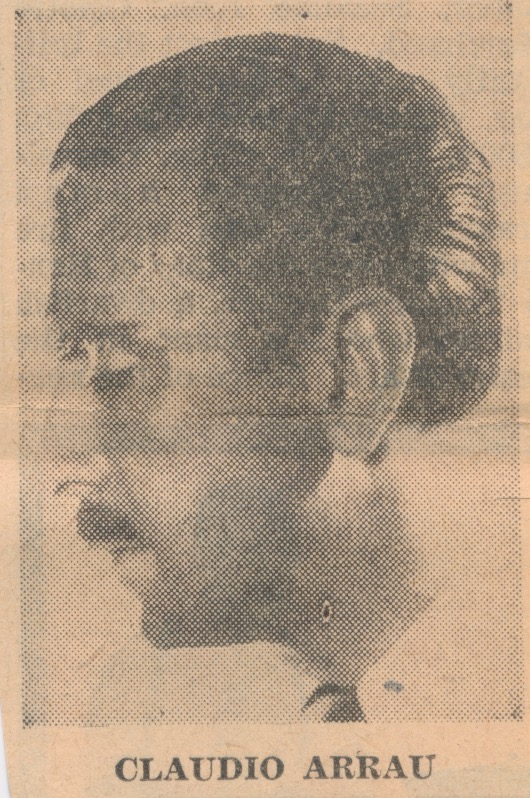
1953 Claudio Arrau portrait
click to view full image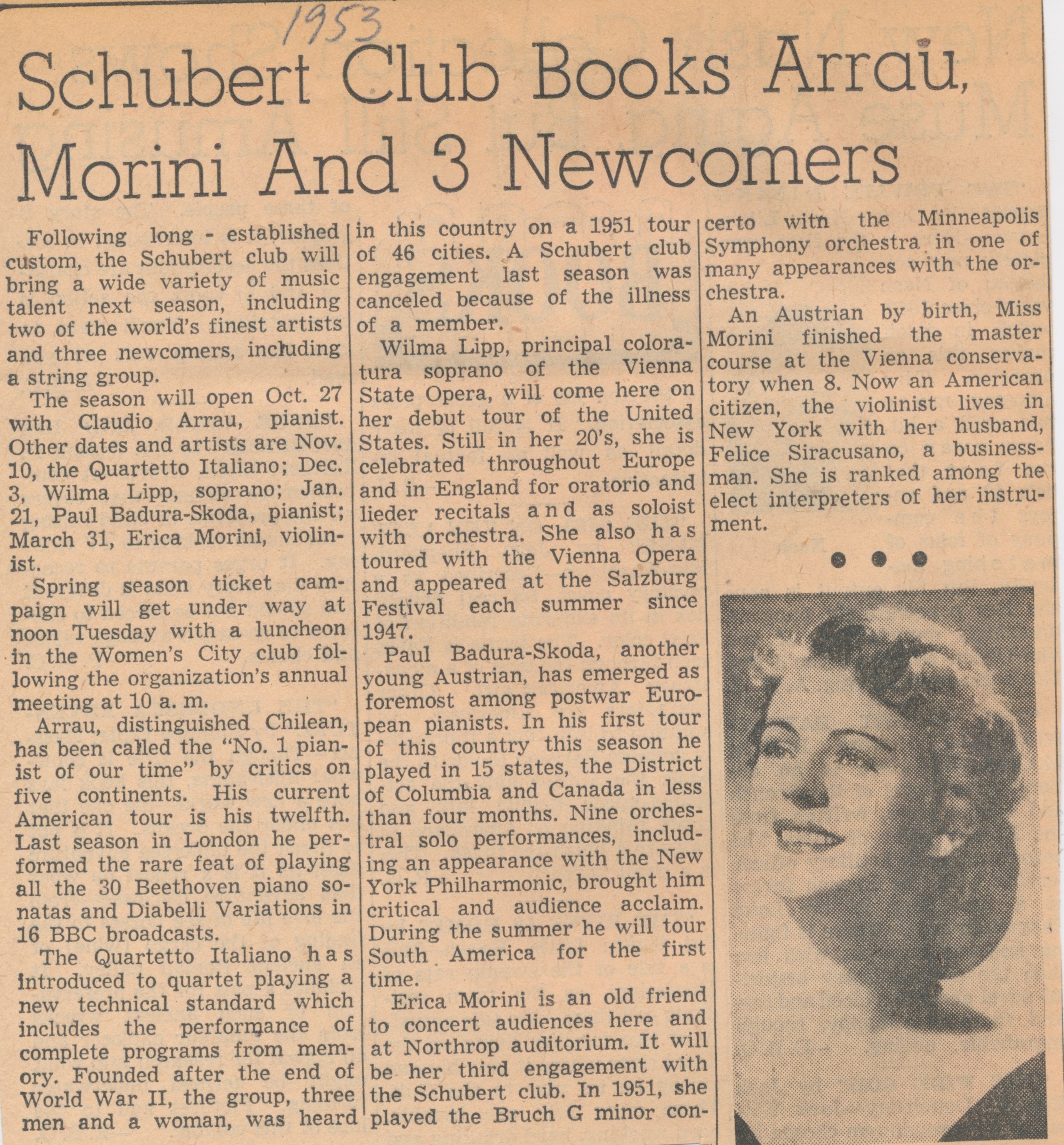
Claudio Arrau 1953 Artists preview
click to view full image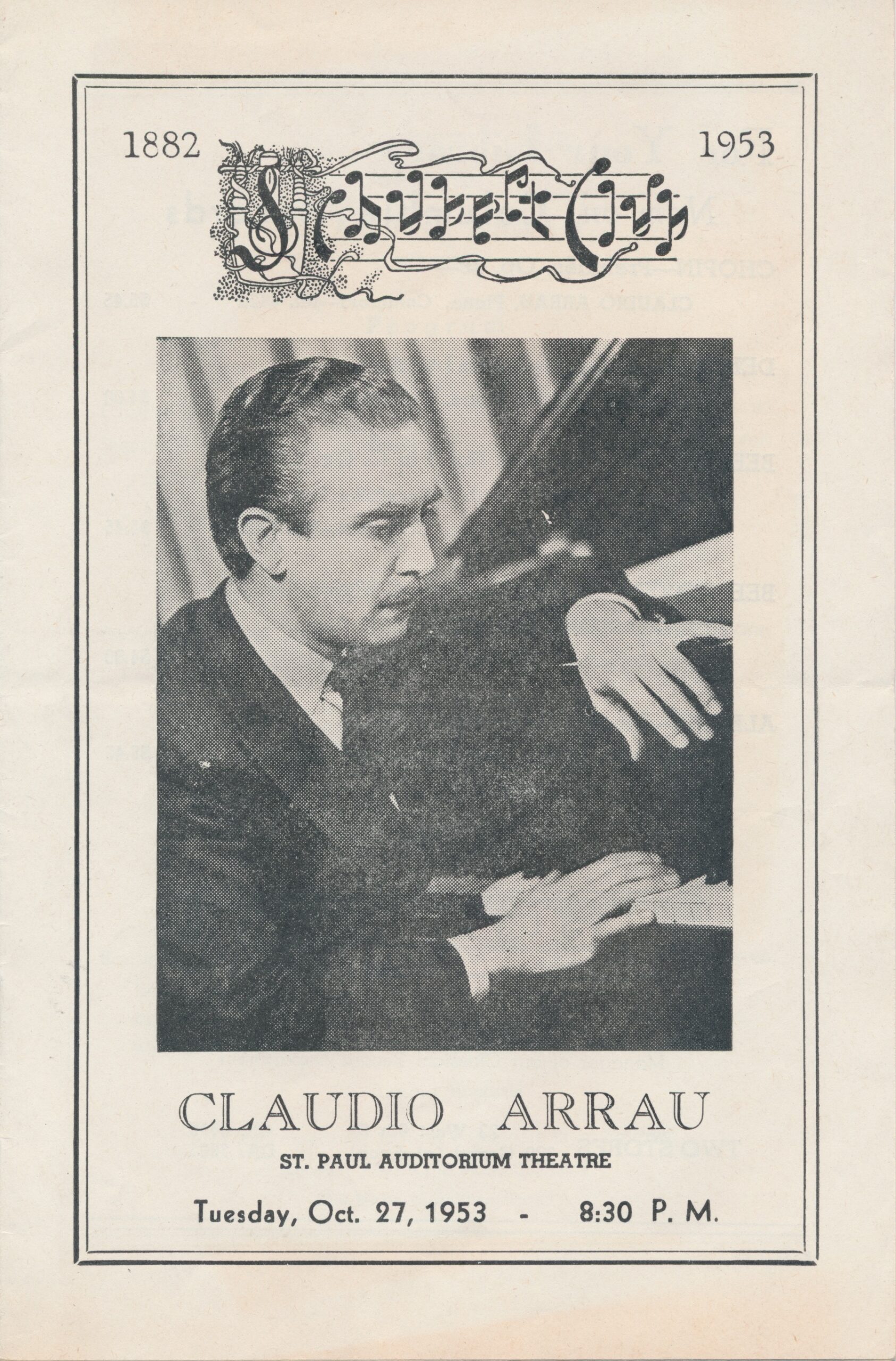
Claudio Arrau program cover
click to view full image
Claudio Arrau 1953 concert review, Pioneer Press
click to view full image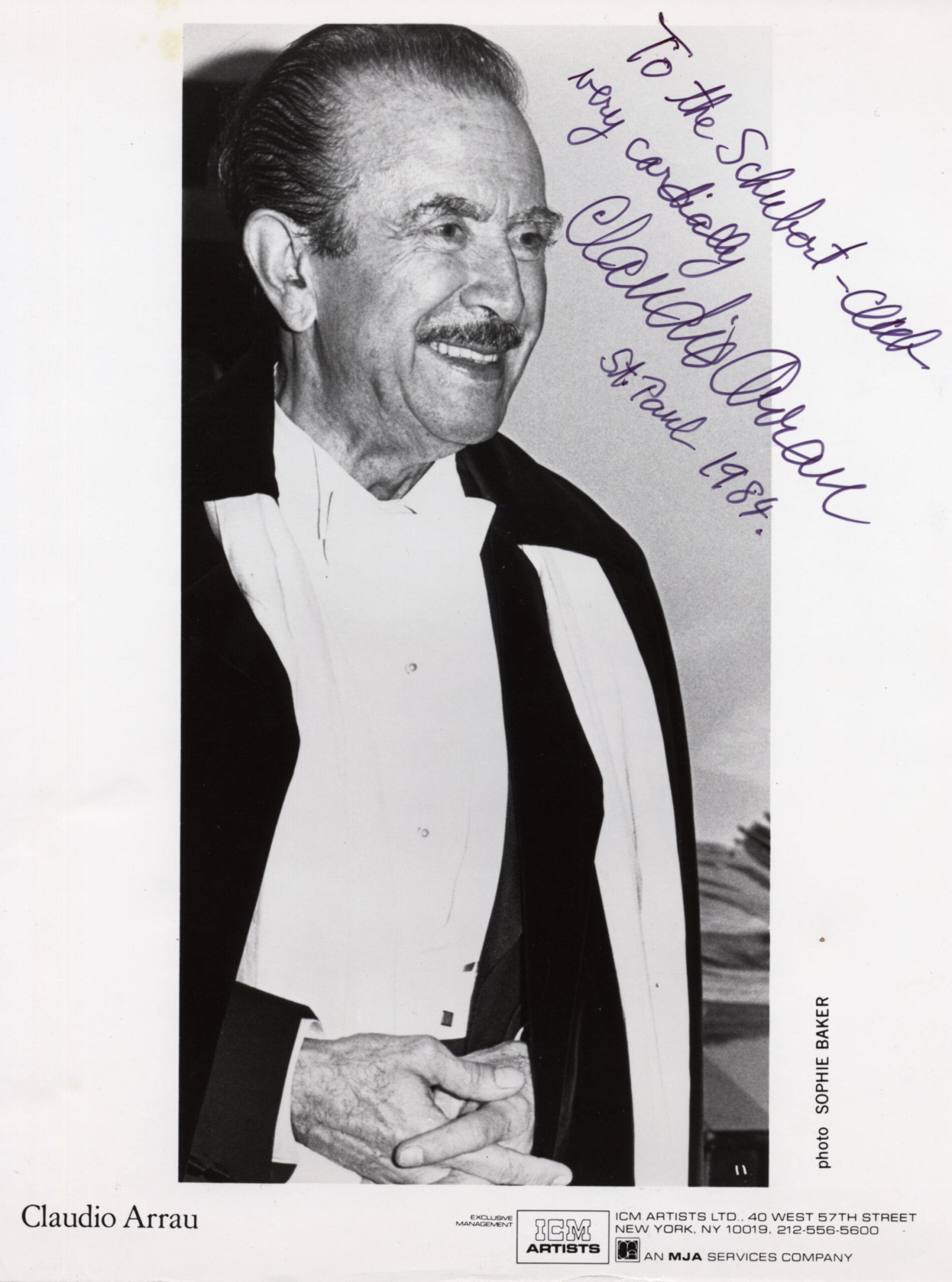
Claudio Arrau signed photo, 1984
click to view full image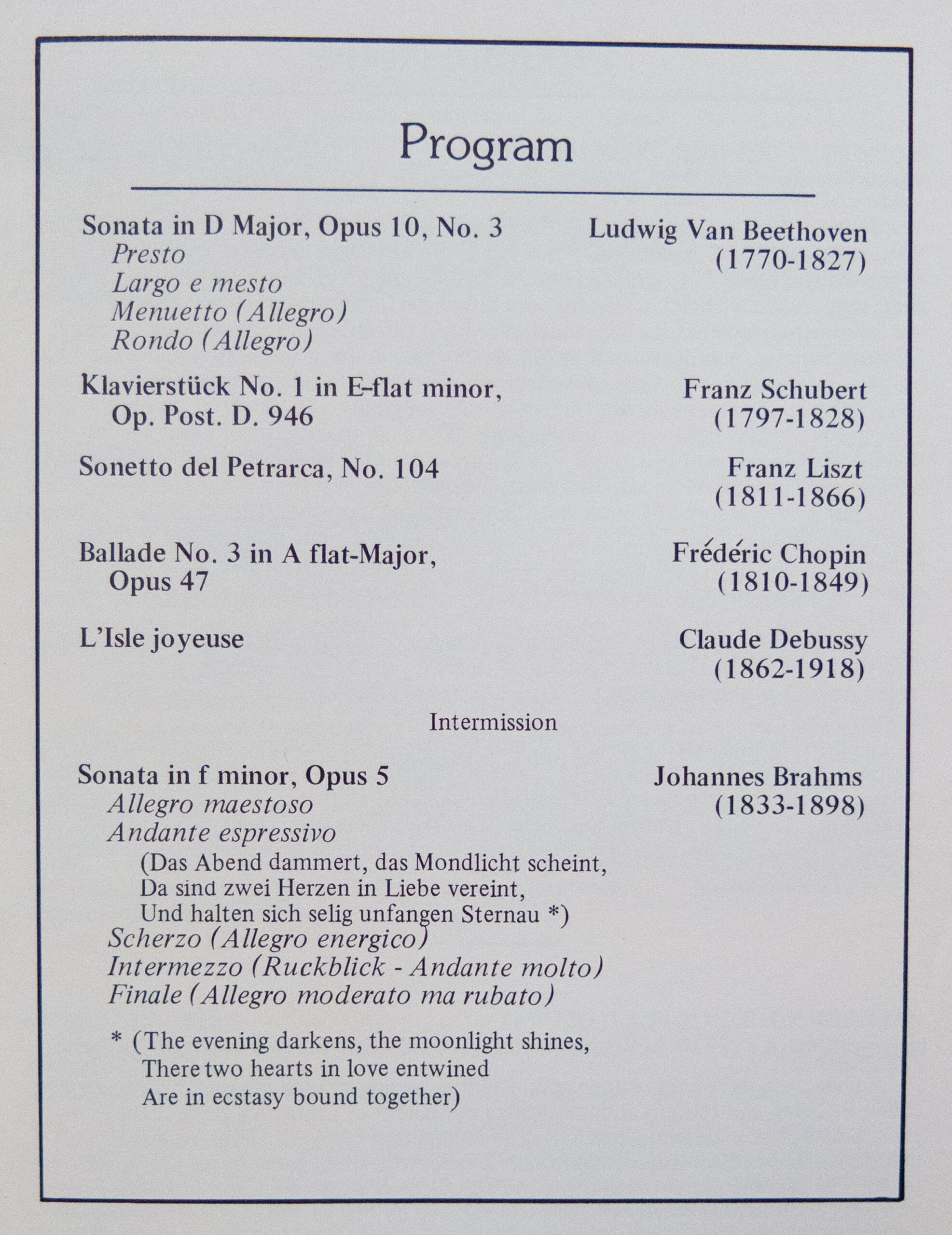
Program from Arrau’s 1983 concert
Click to View Full Image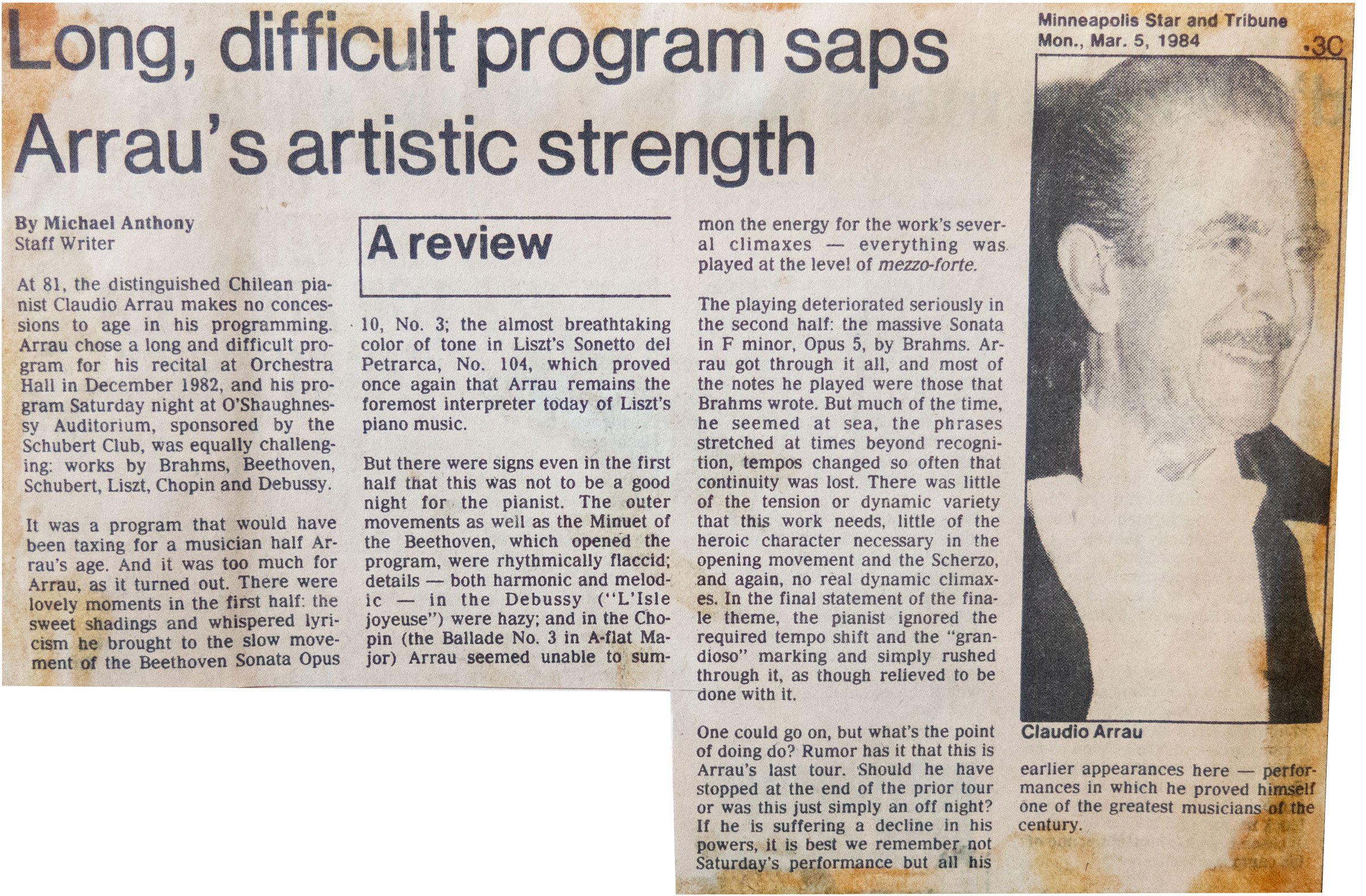
Review of Arrau’s 1983 performance in the Minneapolis Star-Tribune
Click to View Full Image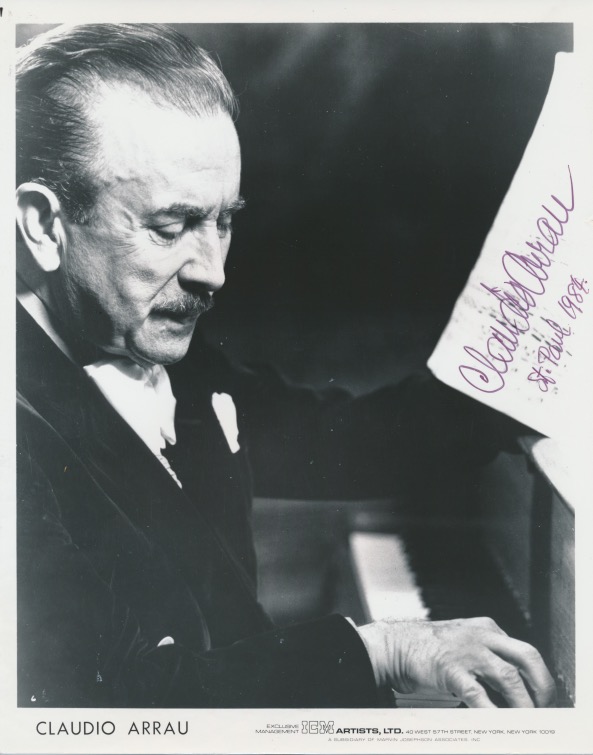
Signed photo of Arrau from 1984
Click to View Full Image

